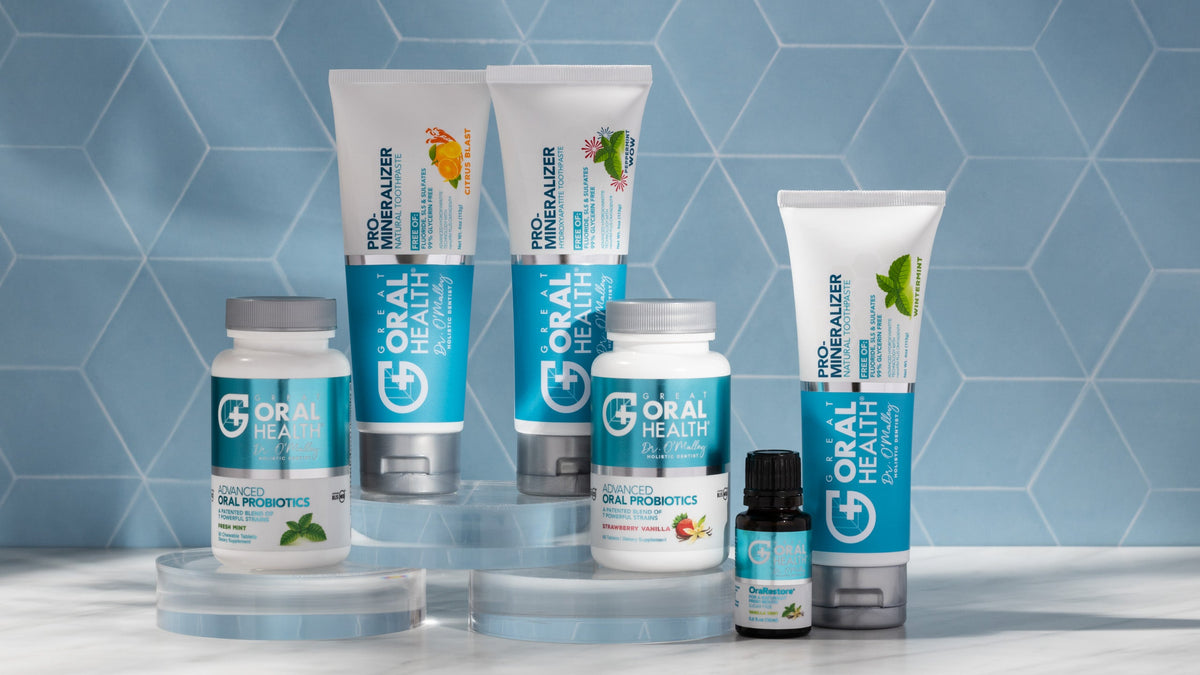
Is Your Toothpaste Hurting Your Teeth? The Hidden Dangers of Common Ingredients
|
Time to read 5 min
|
Time to read 5 min
Toothpaste is something most of us use daily, if not twice a day, as we have been taught that it’s essential for maintaining healthy teeth and gums. But what if your toothpaste is actually doing more harm than good?
Many commercial toothpastes contain ingredients that, while effective at cleaning teeth, can also contribute to tooth sensitivity, enamel erosion, gum irritation, and even long-term health concerns. The chemicals and additives in mainstream toothpaste may be disrupting your oral microbiome, stripping away beneficial bacteria, and exposing you to unnecessary risks.
In this article, we’ll uncover the hidden dangers of common toothpaste ingredients, how they may be affecting your health, and what to look for in a truly safe and effective toothpaste.
Toothpaste is marketed as an essential part of oral hygiene, but its primary function is not to clean your teeth—your toothbrush does that. The brushing motion itself removes most plaque and bacteria, while toothpaste is meant to act as an enhancer, offering additional protection and support.
A truly beneficial toothpaste should:
✅ Help remove plaque and prevent the buildup of harmful bacteria
✅ Strengthen enamel through natural remineralization
✅ Support gum health and reduce inflammation
✅ Freshen breath without masking underlying oral health issues
Unfortunately, many commercial toothpastes do more than just enhance oral health—they introduce harmful chemicals that may compromise it. Let’s explore some of the most problematic ingredients hiding in your toothpaste tube.
The Hidden Dangers in Your Toothpaste
Sodium Lauryl Sulfate (SLS): The Irritating Foaming Agent
Sodium Lauryl Sulfate (SLS) is one of the most common ingredients in commercial toothpaste. It’s used as a detergent to create a foamy lather, giving you that "clean" feeling while brushing. However, this sudsy effect is purely cosmetic—it does not actually improve cleaning effectiveness.
While SLS helps break down particles on teeth, it is also a known skin and tissue irritant. In toothpaste, it has been linked to:
Despite these issues, SLS remains in most mainstream toothpastes simply because it creates a foaming effect that people associate with cleanliness.
What’s the alternative? Many natural toothpastes now use gentler surfactants, such as coco-glucoside or saponins, which create a mild lather without irritating oral tissues.
Triclosan: The Banned Antibacterial Agent
Triclosan was once a common antibacterial ingredient in toothpaste, praised for its ability to fight plaque and gum disease. However, growing health concerns led to the FDA banning triclosan in hand soaps in 2017—yet it continued to be used in some toothpaste formulas for years.
Research has raised serious concerns about triclosan, including:
While many brands have phased out triclosan, it’s still important to check ingredient labels to ensure your toothpaste does not contain this questionable chemical.
Safer alternatives? Naturally antibacterial ingredients like tea tree oil, coconut oil, and xylitol help fight harmful bacteria without disrupting hormone function or harming the environment.
Artificial Sweeteners: A Hidden Risk for Gut & Oral Health
Toothpaste needs to taste good to encourage regular use, so manufacturers often add artificial sweeteners like aspartame, saccharin, and sucralose to enhance flavor. These sweeteners make toothpaste palatable without using sugar, but they may not be as harmless as they seem.
Better options? Natural sweeteners like xylitol, stevia, and monk fruit offer a safer, cavity-fighting alternative while still improving taste.
Fluoride: A Controversial Ingredient with Potential Risks
Fluoride has been added to toothpaste for decades due to its ability to strengthen enamel and prevent cavities. While it’s true that fluoride can slow down decay, its risks have sparked growing concerns.
Potential issues with fluoride include:
Natural remineralization alternatives? Hydroxyapatite, the primary mineral in tooth enamel, is now being used as a fluoride-free alternative that naturally strengthens teeth without the potential risks. NOTE: For effective remineralization via absorption, the hydroxyapatite needs to be in a nano form.
Propylene Glycol: A Synthetic Chemical with Uncertain Safety
Propylene glycol is a petroleum-based chemical used in toothpaste as a humectant, helping retain moisture and prevent the product from drying out. While it is generally recognized as safe in small amounts, concerns exist regarding its potential effects.
Safer options? Glycerin derived from plants is a natural alternative that keeps toothpaste smooth and hydrated without potential risks.
Read Your Labels & Choose Wisely
Most people don’t think twice about what’s in their toothpaste, but choosing the wrong formula can have lasting consequences on your oral and overall health. Many conventional toothpaste ingredients do not actually benefit your teeth—instead, they can contribute to irritation, microbiome disruption, and even long-term health concerns.
When selecting a toothpaste, look for:
✔ SLS-free and triclosan-free formulas
✔ Natural sweeteners like xylitol instead of artificial ones
✔ Fluoride-free remineralizing ingredients like nano-hydroxyapatite
✔ Gentle, plant-based surfactants instead of harsh detergents
By making informed choices, you can ensure that your toothpaste is truly supporting your oral health—not working against it.
Yes, if you address the root cause early, sensitivity can improve with proper care.
Absolutely! Ingredients like hydroxyapatite and calcium phosphate can rebuild enamel naturally without fluoride.


